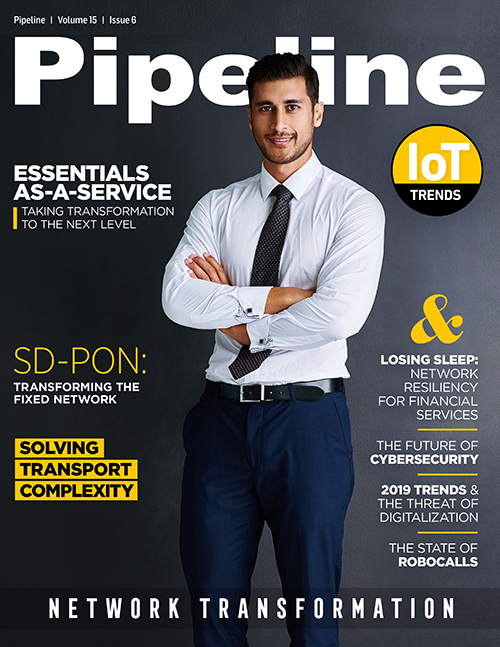Article Index for the January Issue:
January 2019 - Network Transformation
January 2019 - Network Transformation
IoT Trends
By: Ohad Amir
» read this article
Essentials-as-a-Service: Taking Transformation to The Next Level
As part of your strategy to digitally transform your organization, you’ve made the decision to move key applications—even mission-critical parts of your business—to the cloud…for all the right reasons. Doing so is key to creating a more agile, responsive and competitive IT organization, a highly efficient and effective environment where finite resources are able to focus more on creating new business capabilities and less on maintaining IT operations. But what about all the remaining mundane, keep-the-lights-on operational tasks that are ‘essential’ to supporting the always-available, 24/7 expectations of the business? If the care and feeding of your office applications have been moved to Office 365 or Google apps, and the most critical business apps are now being delivered aaS, what about the remaining physical infrastructure that connects users when they are in the office or their physical devices, such as desktops, laptops, tablets and phones? What about the care and feeding of those end-user devices that consume a tremendous amount of cycles to configure, track and deploy, as well as the service desk functions that are ‘essential’ to delivering availability, uptime and an exceptional experience to your user community? What’s key to optimizing your ability to meet these sorts of demands? Essentials as a Service (EaaS) In 2019, IT leaders and CIOs will want to consider Essentials as a Service (EaaS), which involves offloading the remaining operational aspects of support to IT infrastructure experts to further drive agility and efficiencies throughout their organizations…» read this article
How Financial Services Companies Can Rest Assured of Their Network's Resiliency
By: Roy Hilliard
» read this article
SD-PON: Transforming the Fixed Network
The telecom industry is undergoing a massive transformation as service providers across the board seek to transition their networks from proprietary closed box solutions to more open SDN and NFVI-based architectures. The goal of these network transformations is to reap the benefits associated with economies of scale, reduced CapEx and OpEx, as well as gain the agilities of service introduction. As part of this effort, broadband service providers are turning to new software-centric technologies to redefine their network architectures and achieve these benefits…» read this article
A Holistic Approach to the Future of Cybersecurity
By: Stewart Collier
» read this article
Solving Transport Complexity
By: Dean Campbell, Brandon Peyton
» read this article
2019 Trends & The Threat of Digitalization
By: John Brooks
» read this article
The State of Robocalls And What's Next For Carriers
By: Jim Tyrrell
» read this article
Letter from the Editor
Transformation is a messy thing. But, it can also be beautiful. Transformation is more than change, it's about creatively melding the new and old—separate and disparate things—to create something truly unique. Transformation is a delicate art. Do it well and you create a masterpiece. And like art, if you do it poorly you do nothing other than create a grey goop and get paint on your hands.As we look back on 2018 and ahead to the New Year, swirls of innovation clearly emerge. Trends become more defined, more resolute and begin to converge into a tapestry of possibilities…» read this article
Telecom Industry News
From FCC rulings to lifting the lid on Victorian-era manhole covers, the last weeks have brought a crop of interesting news stories on network evolution, the road to 5G, and IoT. As is fitting for this time of year, a host of 2018 end-of-year summaries as well as forward-looking 2019 predictions came in, including the ten top consumer trends of the year as reported by Ericsson’s ConsumerLab report, now in its eighth year. Top innovation award winners from Microsoft’s M12 venture fund, the Nokia Open Innovation Challenge, and the Nokia Bell Labs Prize were also announced…» read this article

















